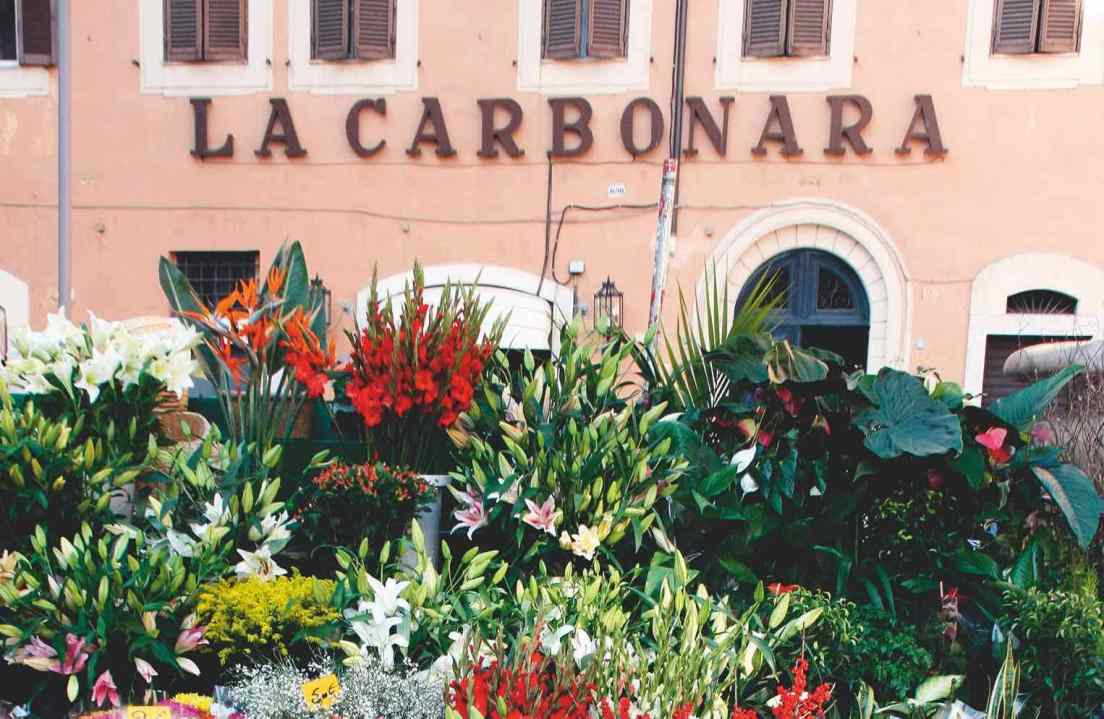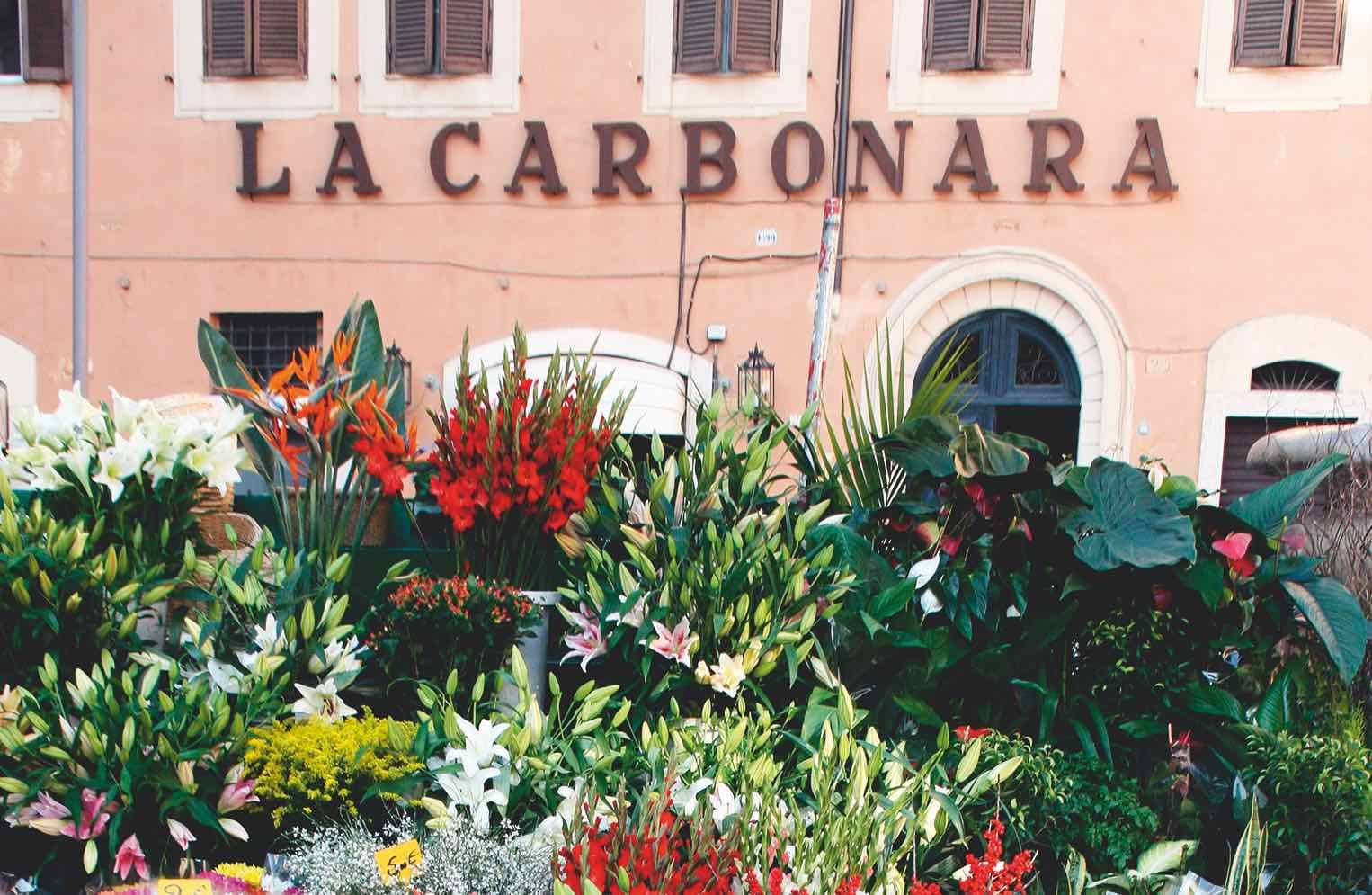Farmer, restaurateur, critic, foodie activist, traveller (he’s worked in Zimbabwe as well as South Africa), cookery book writer, longtime TV presenter of New Scandinavian Cooking, food columnist for a couple of Norwegian papers as well as formerly for the Washington Post, Andreas Viestad’s belt has many notches. He lives between Oslo and Cape Town and for 25 years has been a regular visitor to Rome. His favourite restaurant there is La Carbonara, by the Campo de’ Fiori, and he has had the strikingly good idea of writing a foodie history of the world by examining a single meal eaten there.
Early in the narrative we get a few lessons in geography, economic history and even contemporary mores. For example, at La Carbonara Viestad notices that some of a group of young friends at a nearby table have made do with simple pasta dishes while others have ordered the expensive grilled sea bass. ‘The tradition when eating out is to pay the Roman way, pagare alla romana, which involves splitting the bill equally without calculating precisely who has eaten what.’
Viestad’s dinner begins with bread. It’s light, fluffy and has a crisp crust and doughiness that yields the right amount of resistance when you chew; it’s made in the old bakery next door, with its complicated system where you order here, pay there and collect the bread somewhere else, showing the receipt. Rome’s geography meant it had limited farm land but a rapidly increasing population, and it quickly became dependent on imported grain, with the river allowing it to build ‘an advanced trading system’. Grain that can be stored without spoilage can also be taxed, distributed freely as rations when the populace is feeling squeezed or disgruntled, and used to feed an empire. One ship can carry hundreds of tonnes, whereas oxen might ‘cover 12 miles (19km) per day at best, and 22 pounds (5kg) of your load would have to be used as fodder’.
Smoke-stained pictures of rural scenes remind us that the art in restaurants should not compete with the food
Bread is food, power and also, as Holy Communion demonstrates, symbolic. Controversies about leavening remind us that the Roman tradition is based on matzo, the unleavened bread Jews eat at Passover (not Easter, the only error I found in this learned volume). Unlike Noma in Copenhagen, our own Fat Duck and other restaurants associated with the molecular gastronomy trend, the point of a Roman eatery such as La Carbonara is that ‘it sells the idea of something that never changes’. Familiarity is all – even the ‘generic, smoke-stained pictures of rural scenes’ which always remind us that the art in restaurants should not compete with the food. Better art might outshine the food, Howard Hodgkin often relished telling the table at dinner.
Rome is outside the butter belt, and you are likely to be served a small saucer of olive oil with your bread, even at breakfast. Viestad’s companion at an early stay at an Italian agroturismo gave him the clue, and told him to look around: ‘Do you see green valleys and cows grazing, or do you see parched hillsides and wizened olive trees? That’s the main rule when eating in Italy: you eat what you see.’
Salt was another commodity important to the Roman empire, since it too could be taxed. Viestad has collected many varieties: ‘a foodie phenomenon with a touch of stupidity, and prices that are hard to defend’. He was present at a celebrated 2003 salt tasting at Erice in Sicily for scientists and chefs. It turned out that, when dissolved in water, it was virtually impossible to distinguish one from another. It is only their textures that differ, but this determines their gastronomic properties. (The food writer Jeffrey Steingarten was the only participant who could detect differences in a blind tasting of the solutions.)
Viestad’s pasta dish was, naturally, carbonara, and he favours Alan Davidson’s origin story that the recipe developed immediately after the second world war, when the rations given to American GIs in Rome included bacon, egg and tinned cream. Despite the efforts of the Futurist poet and propagandist Marinetti to extirpate pasta from the Roman diet, almost everyone still eats it at least once a day, and the wheat from which it is made is one of the pillars of civilisation. There is still debate among archaeologists, historians and anthropologists as to whether cultivating grain was mankind’s ‘biggest mistake’, as Jared Diamond has it. But there is agreement that, as Viestad says:
Grain was the reason we settled in one place and organised ourselves into larger settlements; why we developed organised religion and written language; and what brought us ruling classes, laws and taxes, priests, warriors, and professions that didn’t even contribute to the production of food.
Chapters on the discovery of pepper and the evolution of wine lead to the main course, secondo, the protein part of the meal, and Viestad orders three tiny grilled spring lamb chops, abbacchio a scottadito, from animals that, as Juvenal puts it, ‘have not lost their virginity by eating grass’. This leads to some thoughts on domestication, and the issue that, following the transition from hunter-gathering to agriculture, ‘the average human height decreased and malnutrition increased’. Richard Wrangham is rightly credited with discovering that cooking made us human since, with more calories accessible through less effort, we were able to evolve larger brains. In the final chapter, on the lemon that goes into his sorbet, Viestad claims that, historically, the Mafia ‘controlled most parts of the lemon business’.
Viestad does something a touch radical in this riveting volume: ‘I’ve not used footnotes, something academic readers might find annoying, but I have referred to the source in the text when quoting or relating to reasonings from specific books.’ Any annoyance this might have caused is mitigated by a generous guide to these, and to his half-dozen other favoured restaurants in Rome.







Comments